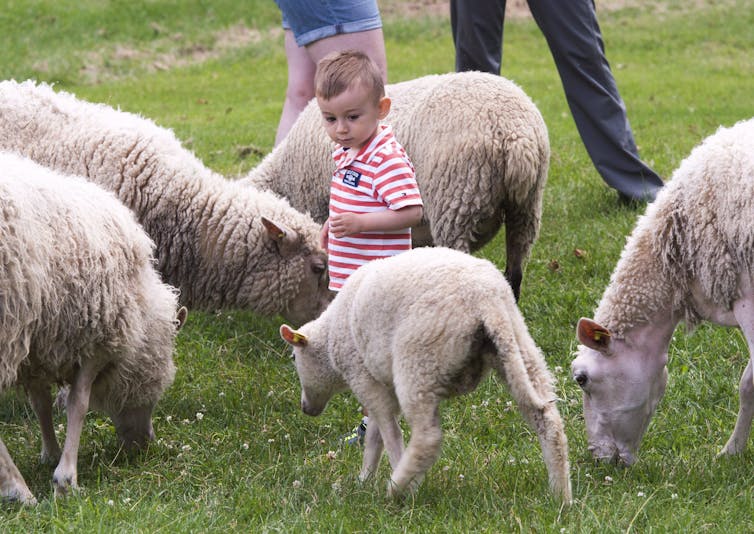Social justice movements often allude to the idea that “seeing is believing,” meaning that if people are exposed to a given injustice, political transformation will follow.
An example is a 2019 opinion piece in the New York Times entitled “Don’t Look Away.” It aimed to expose the horrors of torture in order to advocate for its abolition by confronting readers with an image depicting a tortured prisoner.
Similarly, the People for the Ethical Treatment of Animals (PETA) has a subdivision called “The Eye” that aims to uncover violence against animals in places usually hidden from the public’s eye, such as slaughterhouses, dairy and meat farms, laboratories and other similar locations.
This rationale also underlies the exposés conducted by animal advocacy organizations like Animal Justice, which painstakingly document and expose instances of abuse at a so-called “humane meat slaughterhouse” near Vancouver.
The mystery of seeing and not believing
While these strategies are based on the belief that “seeing is believing,” activists also encounter people who have the presumed necessary information to spur behaviour change but don’t do so.
I have often heard animal advocates who firmly uphold that seeing is believing express their confusion: “How can people know and not change? Why don’t they stop?”
It’s important to examine this mystery and challenge the idea that knowing about a given injustice will lead to political change. I argue, first, that language plays a central role in shaping human failure to recognize certain forms of violence against minoritized groups, including animals, and second, when humans do recognize violence, they may experience not dismay but rather pleasure in harming those over whom they wield power.
I also believe that a plausible strategy to achieve political transformation should involve making the rich lives of animals much more visible.

The power of language
Imagine that on your way to work you encounter a school; you see bricks, a basketball court, students, teachers, chalkboards through the windows. However, none of these entities is a school in itself.
Language has a gathering force that brings all these disparate entities together into the concept of school. It enables us to see the school for the kind of entity that it is — a place where we learn, pass exams and make friends, among other things. Language allows us to see entities like schools for what they are. Concepts precede what we see.
This gathering force of language may appear as neutral at first, or even good, but it can have pernicious effects because it contributes to producing oppressive concepts.
Consider the case of PETA’s subdivision, The Eye, which releases footage of, for example, invasive experimentation on laboratory animals. When we view pictures of lab animals, we see them through the concept of “the animal.” This concept isn’t just a biological category — after all, humans are animals too. Instead, throughout western history, the concept of the animal has been associated with notions like irrationality, violence and incompetence.
For this reason, when animals are seen through the concept of “the animal,” they appear as “less than,” uncivil and deficient compared to human beings, and therefore deemed less worthy of respect. Because animals are seen as morally and intellectually inferior, not everyone regards the violence exposed by animal advocacy organizations as wrongful. This could explain why watching the kinds of footage PETA releases may not lead people to stop using certain medicines and cosmetics.
Read more: How the hard work of wild animals benefits us too
The pleasure of sovereignty
In his subversive 1887 book On the Genealogy of Morals, German philosopher Friedrich Nietzsche analyzes the master-slave relationship, revealing that masters experience pleasure in mistreating those who are beneath them.
Under current law, domestic animals are considered human property, our inferior subordinates. That means Animal Justice’s strategy of exposing the horrors of slaughterhouses may lead to counter-productive results.
Perhaps exposing humans to the violence animals experience may lead us to discover we find pleasure in harming or witnessing harm to those we consider to be our subordinates. Many studies demonstrate that this phenomenon occurs within hierarchical human-human relationships in various contexts.
Given that many humans have a poor view of animals’ lives, I propose designing public awareness campaigns that illuminate the richness of those lives by directing attention to actual animal agency rather than to human abusers of animals.

Many people may not realize that animals grieve, forge intimate relationships throughout their lifetimes and have their own forms of social organization and profound emotional lives.
It seems plausible that if, and when, animals are seen for the kinds of rich and social subjects that they are, human beings may better perceive and empathize about the harms they endure.

